Regional champions, Michigan Technological University's Concrete Canoe and Steel Bridge teams share design and process strategies as both teams head to nationals.
The National Concrete Canoe Competition, sponsored by the American Society of Civil Engineers, is June 6-8 at the Florida Institute of Technology in Melbourne, Florida. The National Student Steel Bridge Competition, sponsored by the American Institute of Steel Construction, is this weekend, May 31-June 1, at Southern Illinois University in Carbondale.
We talked to this year's team leaders: Liz Adams and Cole Schilling from the Concrete Canoe team, and Alec Weitermann, who leads the Steel Bridge team. Both groups are interdisciplinary — students from any major are welcome.
Concrete Canoe: Alumni, Gators and “Things Learned”
Second best isn't good enough. Concrete Canoe teams are required to place first in regionals in order to qualify for nationals. Senior co-captains, Adams (LA), who graduated in spring 2019 with her degree in electrical engineering, and Schilling (CS), in his fourth year of civil engineering studies, have been with the team since their first year at Michigan Tech.
Q: Why did you name this year's canoe Driftwood?
LA: Because of the flood last June, the team decided to dedicate this year’s boat, Driftwood, to Great Lakes beaches to show support to the recovering local community. The theme was carried throughout the display table, cross section, and stands, and was a true representation of the love for everything beach! The display table resembled a bait shop and the stands were a pier.
Q: It's 164 pounds and 20 feet long. How wide is it, and what unique details went into this year's design?
LA: The max boat width of the boat width is 27.1 inches and the interior is unique; our amazing aesthetics committee made it to look like a beach. We're expecting to have the second lightest boat at nationals, close behind Florida University's 170-pound canoe.
Q: Liz, you’re also a paddling coach — anything special about practice, paddles and coaching? We won’t giving give away any secrets.
LA: For paddling, we put in about 1,000 person-hours, with practices on Keweenaw Waterway in the fall and then pool and dryland practice in winter and spring. Two weeks before regionals the paddlers traveled to Ashland, Wisconsin, to paddle outdoors before competition. We also brought an old concrete canoe to get a good representation of what to expect at races.
At practices, we focus on paddler techniques and training new members, as well as figuring out the best combinations of bows and sterns to ensure we win! At dryland practices, we work on cardio and strength building.
We pick paddlers based on talent and dedication; which races they do depends on their skill set (should they be in sprint or coed or slalom?) and their partner.
Q: Cancellations happen. The North Central Region is notoriously uncooperative when it comes to air and water temperatures meeting race requirements: a combined 85 degrees. You won't have that problem in Melbourne June 6-8 — but will there be alligators?
LA: The paddlers are very excited to actually race; for most it will be their first time. We continue to work out in the weeks leading up to nationals. We're not worried about any alligators but we're keeping a sharp eye out for Gators (University of Florida).
Q: The idea that a concrete canoe can float feels counterintuitive. How do you explain it when people ask?
CS: Concrete floats when it has a lower density than water. We substitute the heavy sand and stone (aggregate) for lighter, less dense materials like small hollow glass spheres and expanded shale. This results in a concrete mixture that is just 59 pounds per cubic foot, which is less dense than water at 62.4 pounds per cubic foot.
Q: Cole, you supervised mix design. What does that process entail and why is it so important?
CS: We test two new concrete mixes four times a week for the first few months of fall semester. Each mix has different materials and proportions of materials. We mix in a bucket with a larger drill and mixing blade, and then pack and cure half a dozen three-by-six-inch cylinders. We test two of the six after seven days and let the other four cure for another week before testing, which involves breaking them two ways:
For compression testing, we apply a load to the top of the cylinder, basically squishing it until it breaks. We record the load, or force (pounds), at which the sample broke, then divide the force by the cross-sectional area of the cylinder to determine its compressive strength. For tensile stress, we measure how much we can pull on our concrete before it fails. Concrete's weakness is its low tensile strength.

Q: This year's junior captain is Mary Kinney, who paddled as well as headed up the structural analysis committee. What kind of organizational framework does the team use to keep everything on track year after year?
LA: This year, Cole and I worked hard to make sure Mary was a part of all decisions and the everyday running of the team. We have a document called “Things Learned,” where we add thoughts and suggestions for next year's team based on what we did this year. We also have a phenomenal alumni base that is always willing to help when we have questions or are looking for ideas.
Q: What is your biggest challenge going into nationals?
LA: One of our biggest challenges heading to nationals was the housing limit of competing members per school imposed by the host school due to lack of rooms. We strongly believe that nationals is one of the best opportunities for us to improve for next year and want every member there. We found additional housing to make sure everyone could come.
Q: Congratulations on graduating, Liz! What will you miss most about Tech, and Concrete Canoe?
LA: Concrete Canoe was one of my best experiences at Tech and I'm going to miss the team. I love everything about the team, from the challenges we faced and overcame, going to nationals my freshman and sophomore years, paddling at competition, the long paddles we did on the Portage, and of course just hanging out.
"I'm looking forward to being an alumna and helping out in any way I can, and seeing what the team does in the future!"

Steel Bridge: From 2,480 Hours to Seven Minutes (or Less)
Alec Weitermann (AW) is a civil engineering major. Last year was his first at Tech and on Steel Bridge. He was on the build team. Teams must either place first or second at regionals to advance to the nationals. Every year, the building challenge involves spanning a river, but the scenario is different: This year, it's focused on rebuilding to make the Hawaii Volcanoes National Park accessible in the wake of the volcanic flows and earthquakes associated with the Kilauea eruption.
Q: Were there any special challenges involved with creating a structure that honored the history of Hawaiian steel bridges?
AW: That's a tough question. The team always strives to make the best bridge we can, and we come across many obstacles no matter the circumstances or requirements.
Q: You ran into a serious challenge toward the end of this year’s fabrication process. How did you solve it?
AW: We encountered a couple of problems. One of the biggest was that we could not fit a couple of pieces into the standardized box (a 42-by-6-by-4-inch right-rectangular prism of non-deformable material used to measure the maximum allowable size of tools and rigid bridge components). Three of the four footings, which are what connects the bridge deck to the ground, did not fit. In order to make it work, we cut off a piece of each footing and used a filler piece in the cross-bracing that connects to the footing.
Q: What skills do students develop to design, fabricate, build and present on the Steel Bridge team? About how many hours are spent in each of those phases?

AW: The design phase takes a lot of knowledge about how structures work. Along with that, the team needs a good understanding of how to use AutoCAD, SOLIDWORKS and Ram Elements — the software used to design the bridge. The total time spent on design was 900 hours.
The fabrication phase is very hands-on. The team uses a variety of bandsaws, table saws, grinders, MIG (metal inert gas) welders and other equipment. The total time spent on fabrication was 930 hours.
Build practice is spent with the four to six people building the bridge — this year we have a five-person build team. The Bridge team practiced about 650 hours combined. Their best time was under seven minutes for the 23-foot-long bridge (five feet wide, just under 200 pounds). The total practice time was 650 hours.

Watch last year's build team at practice.
The competition itself only takes a couple of hours. It consists of aesthetics judging, building the bridge, then doing both lateral and vertical testing. The vertical test puts 2,500 pounds on the bridge.
Q: What were your strengths in regionals — and who do you think will be the strongest competitors in the finals?
AW: At regionals, two of our strengths were stiffness and construction speed. The build team had a great run — but in order for us to be competitive at nationals, construction speed needs to improve. The strongest competitors at nationals will be Lafayette College from Pennsylvania and the University of Puerto Rico.
Q: What was the most rewarding part of being team captain? How is the team organized to function efficiently from year to year?
AW: The most rewarding thing is being able to spend time with great people. This group worked hard together to finish a bridge that the team can be proud of. The head of the design and build team was Daryn Carter. The secretary of the team was LeAnn Brinker; she kept the team organized and made sure it got what it needed in order to get everything done. The treasurer was Kelton Czyzio, who was a great help with welding because the team did not have a head of fabrication this year. Last year's e-board (executive student leadership) helped out a ton as well, especially Julie Bouwens and Greg Naghtin. All in all, everyone on the team helped out in some way, shape or form, which is what makes the Steel Bridge team so great!

Michigan Technological University is an R1 public research university founded in 1885 in Houghton, and is home to nearly 7,500 students from more than 60 countries around the world. Consistently ranked among the best universities in the country for return on investment, Michigan's flagship technological university offers more than 120 undergraduate and graduate degree programs in science and technology, engineering, computing, forestry, business, health professions, humanities, mathematics, social sciences, and the arts. The rural campus is situated just miles from Lake Superior in Michigan's Upper Peninsula, offering year-round opportunities for outdoor adventure.
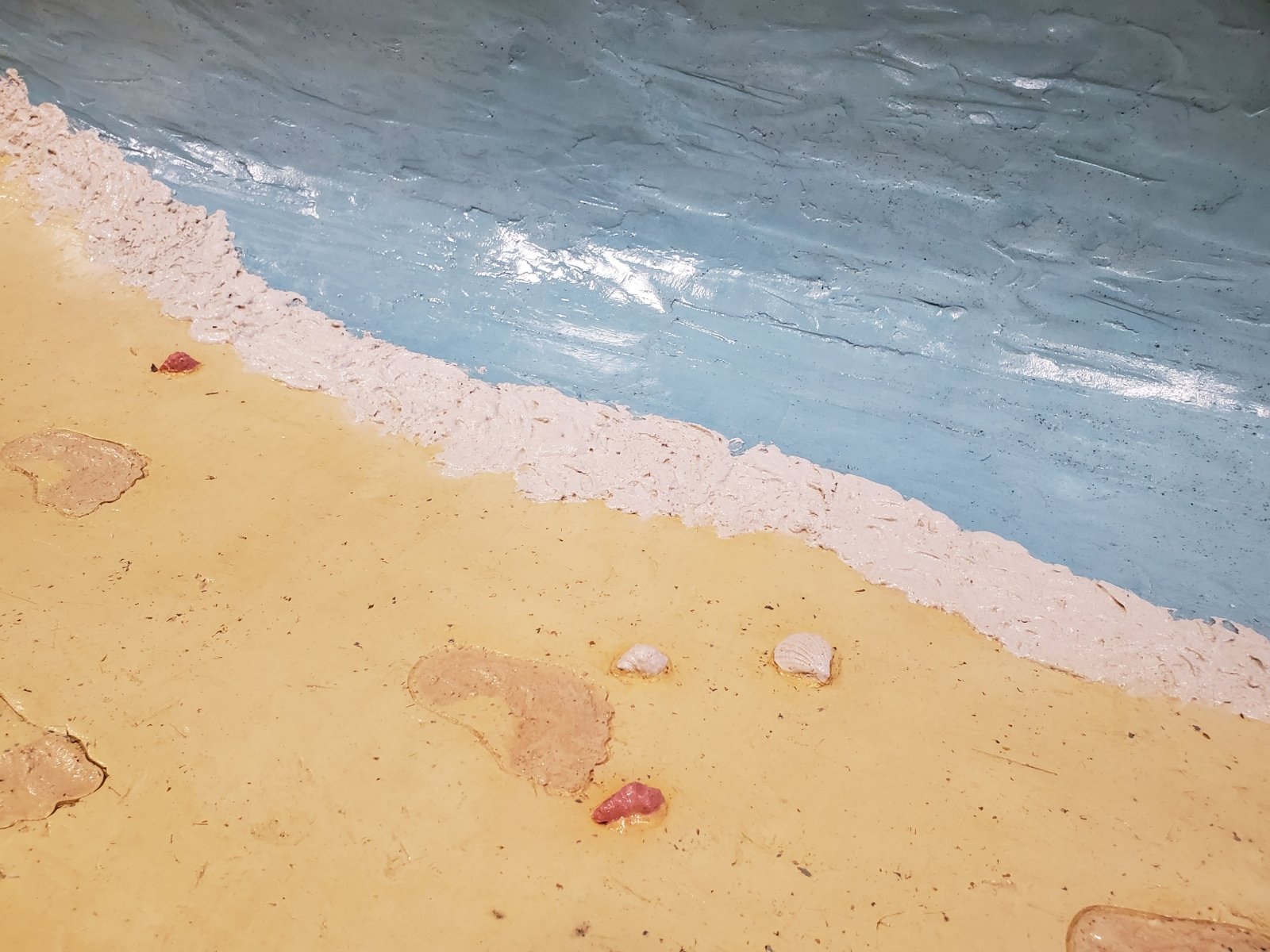
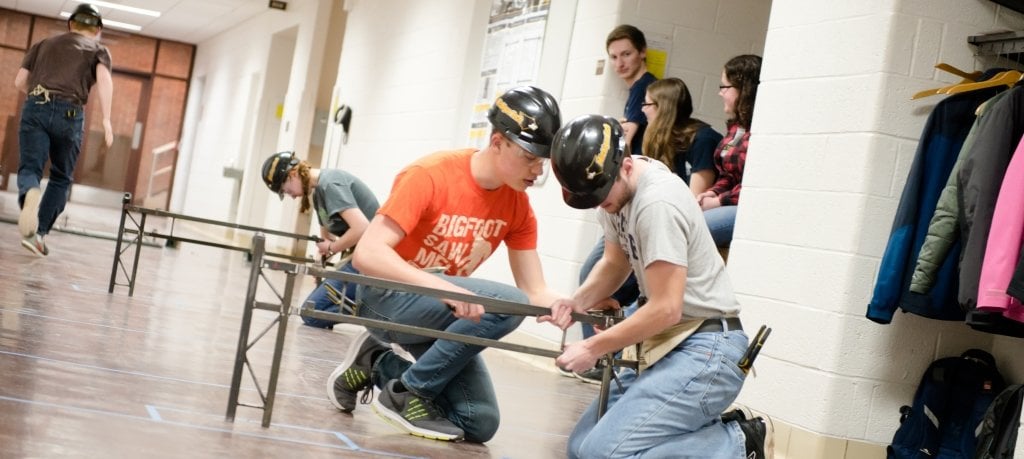
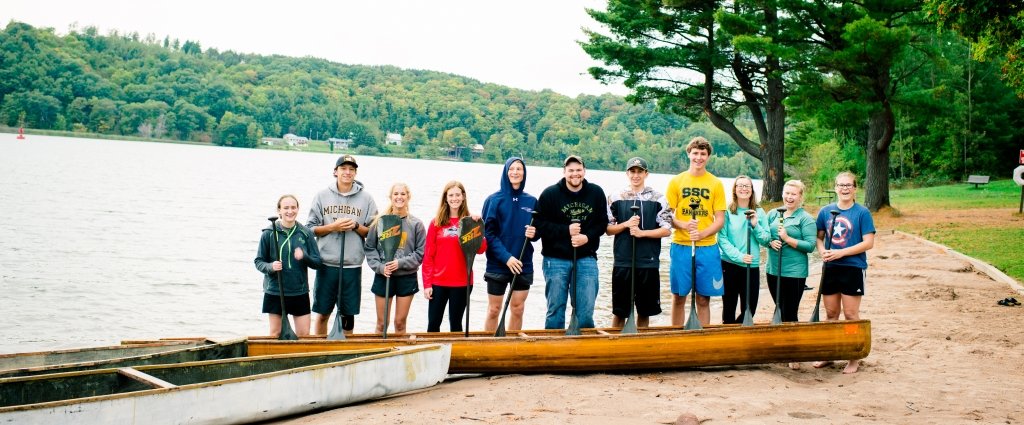
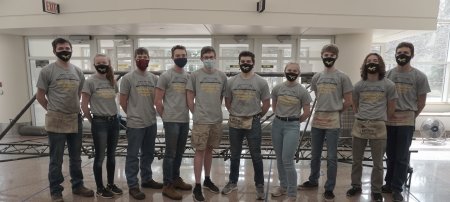
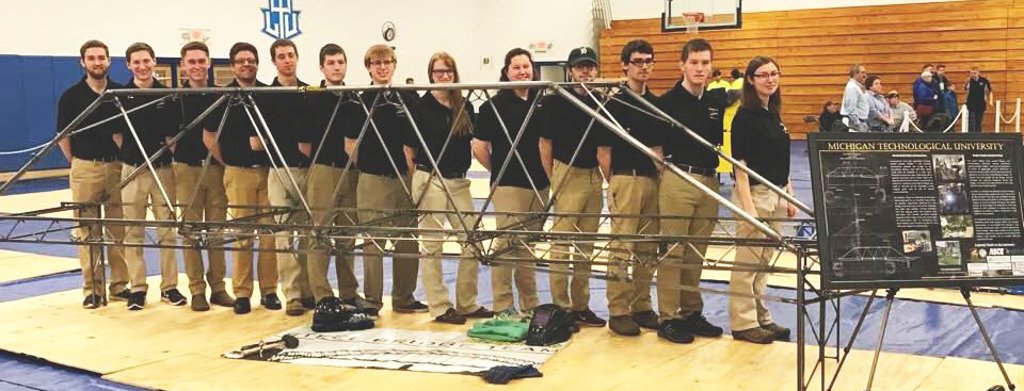
Comments